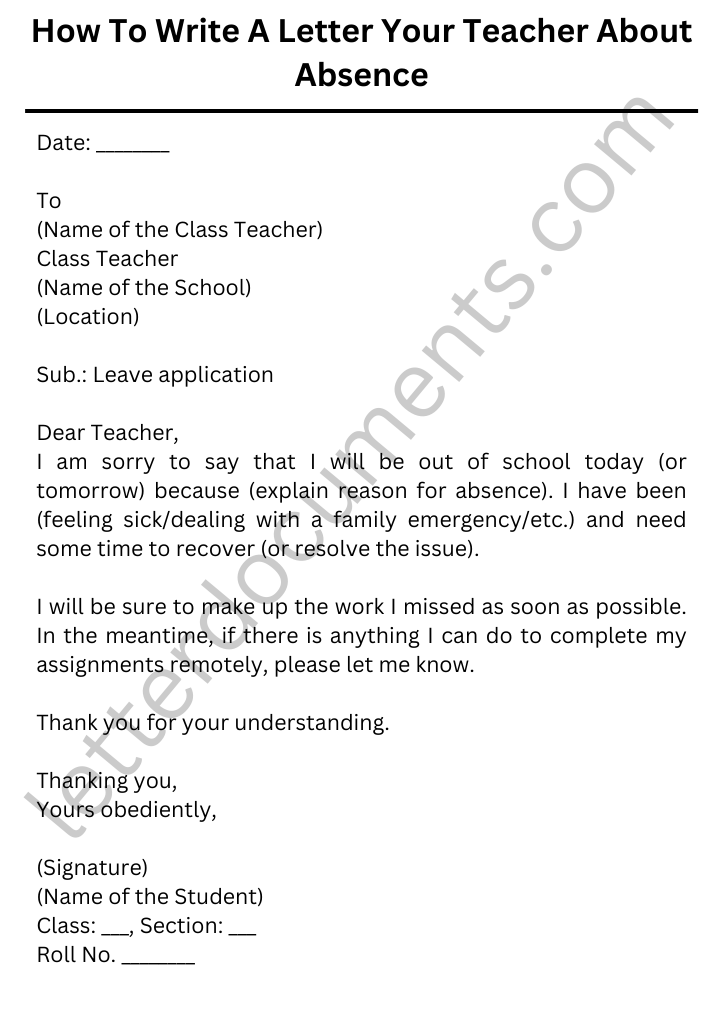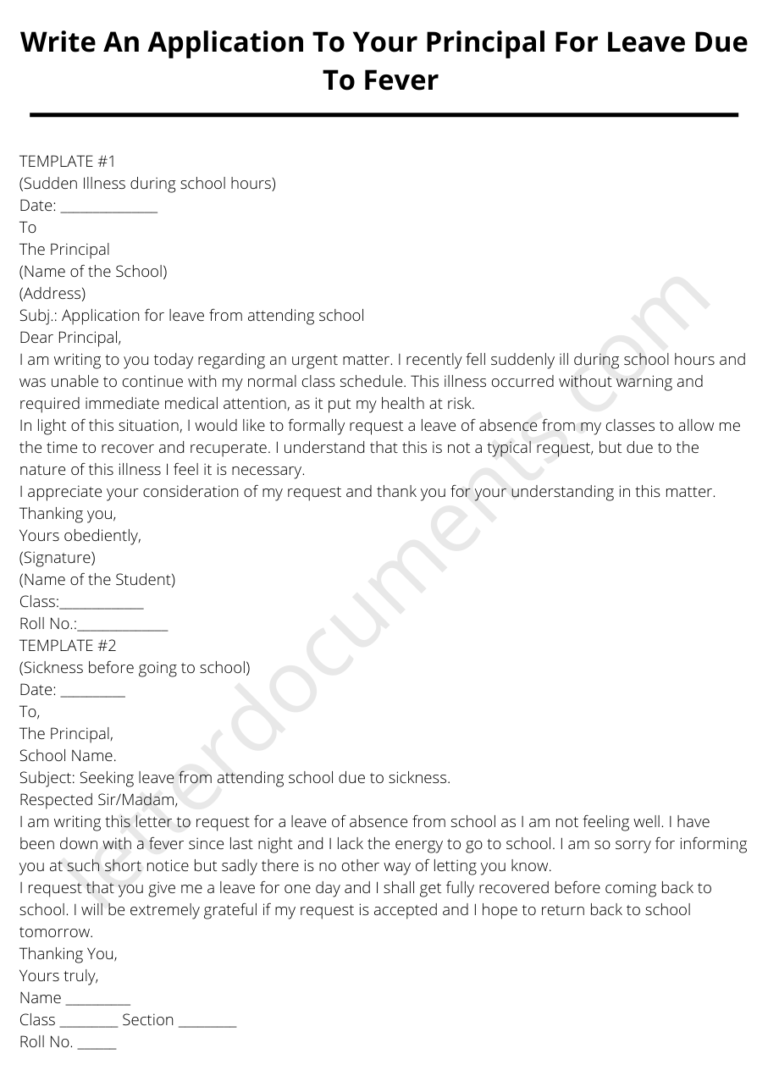Sample Formal Letter to Principal for School Leaving Certificate
It is a matter of great privilege to have been allowed to study in your esteemed institution. I want to apply for a discharge certificate from your school as I am leaving town permanently.
I am grateful for all the help and support I received during my time here. I would also like to take this opportunity to express my sincere gratitude to all the teachers who have contributed to my success.
I hope you will grant me this request and issue my discharge certificate at the earliest possible convenience.
Similar Post: Apology Letter from Student to Principal for Breaking Rules
Formal Letter to Principal: A Comprehensive Guide for Effective Communication
As a professional SEO and high-end copywriter, I suggest writing an effective formal letter to a principal to be concise and transparent in your communication. Avoid using jargon or complex language that may confuse the reader. Instead, use simple, concise, and explicit language to convey your message effectively. Additionally, maintaining a professional tone throughout the letter is crucial. Avoid using overly emotional language or a negative tone that may appear aggressive. Instead, use polite language to convey your points professionally and respectfully. Providing relevant details to support your points is also essential. If applicable, include specific incidents, dates, and names to strengthen your argument and make your letter more persuasive.
Moreover, offering practical solutions or suggestions in your letter can significantly increase the chances of a positive response from the principal. Be realistic and proactive in your suggestions, and avoid making unrealistic demands. Following the proper format and grammar, personalizing your letter, seeking appropriate support, and following up politely and professionally can also enhance the effectiveness of your formal letter to the principal.
Introduction:
Communication is the cornerstone of human interaction, and writing a formal letter to a principal is no exception. Whether you are a concerned parent, a diligent student, or a diligent teacher, knowing how to compose a formal letter to a principal is an essential skill that can help you effectively convey your thoughts, concerns, or requests. In this comprehensive guide, we will explore the intricacies of writing a formal letter to a principal that is grammatically correct and optimized for search engines, helping you outrank other websites and make your communication stand out in the digital realm.
Importance of a Formal Letter to Principal:
A formal letter to a principal is a powerful means of communication in various educational settings, including schools, colleges, and universities. It is a standard mode of communication that requires adherence to specific rules and conventions to maintain professionalism and convey the intended message with clarity and precision. Writing a formal letter to a principal is not just about following the formalities; it is about expressing your thoughts, concerns, or requests persuasively and effectively.
Keyword-rich Subheading: How to Write a Formal Letter to Principal
1. Choose the Right Format:
The format of your formal letter to a principal plays a crucial role in making a favorable impression and conveying your message effectively. Typically, a formal letter should follow the standard business letter format, including the sender’s address, date, recipient’s address, salutation, body paragraphs, closing, and signature. It is essential to use a professional tone and language throughout the letter, avoiding slang or informal language. Using a clear and legible font, such as Times New Roman or Arial, and maintaining consistent spacing and alignment can also enhance the readability of your letter.
2. Use Appropriate Salutation:
The salutation is the opening greeting of your formal letter to a principal and sets the tone for the rest of the letter. It is crucial to use an appropriate salutation that addresses the principal respectfully. If you are writing to a principal you have not met, use “Dear Principal [Last Name].” If you are writing to a principal you have interacted with before, you can use “Dear Mr./Ms. [Last Name].” Avoid generic salutations like “To Whom It May Concern,” as they can be impersonal and unprofessional.
3. Introduce Yourself and State the Purpose:
In the opening paragraph of your formal letter to a principal, briefly introduce yourself and state the purpose of your letter. If applicable, provide your name, designation, and affiliation with the school or institution. Clearly state the reason for writing the letter, whether to convey concern, express appreciation, request information or make a suggestion. Keep the introduction concise and to the point, setting the context for the rest of the letter.
4. Provide Detailed Information and Supporting Evidence:
In the body paragraphs of your formal letter to a principal, provide detailed information about the issue or topic you are addressing. Use a logical and organized structure, presenting your points coherently and persuasively. Support your statements with relevant evidence, such as facts, statistics, examples, or testimonials, to add credibility to your argument. Be specific in your language, avoiding vague or ambiguous statements. Use persuasive language and a courteous tone, respecting the principal and their position.
5. Offer Solutions or Suggestions:
If you are writing a formal letter to a principal to convey a concern or problem, it is essential to offer potential solutions or suggestions to address the issue. Be proactive and constructive in your approach, providing practical and feasible solutions that can help resolve the problem. Offer suggestions that are relevant, realistic, and aligned with the policies and guidelines of the school or institution
Similar post: Write an Application to your Principal for Leave Due to Fever
TEMPLATE #1
(Letter from Student to Principal)
Date: ……………….
To
The Principal
(Name of the School)
(Address)
(Phone Number)
Sub.: Request for issue of my School Leaving Certificate
Dear Sir/Madam,
I am writing to request you to issue my School Leaving Certificate. As I have completed my class curriculum and will be leaving the school permanently, I would need this certificate for future reference.
I would appreciate it if you could process my application at the earliest and issue the certificate without delay. I am enclosing all the necessary documents with this application for your perusal. In case you require any additional information, please do not hesitate to contact me at ___________.
We thank you!
Yours sincerely,
(signature)
(Name of the Student)
TEMPLATE #2
(Letter from Parents to Principal)
Date: ………….
To
The Principal
(School Name)
(Address)
Tel. …………….
Sub.: Application for issue of school leaving certificate of our son/daughter
Dear Sir/Madam,
The undersigned is the parent of __________ studying in grade __ of your school. Our son/daughter has been a student of your school for the past __ years, and we have been delighted with his/her progress.
We regret to inform you that we are moving to another city due to our job posting change. As a result, our son/ daughter will have to leave your school. We would be grateful if you could issue their school leaving certificate at the earliest.
We thank you!
Sincerely,
(signature)
(Name of the Father/Mother)
Conclusion:
In conclusion, when it comes to writing a formal letter, offering well-thought-out solutions or suggestions can significantly elevate the effectiveness of your communication. You can demonstrate your proactive approach and problem-solving skills by clearly identifying the issue, providing supporting examples, and offering practical alternatives. Your suggestions must be specific, detailed, and professional while considering potential objections and focusing on the benefits and outcomes. Additionally, incorporating relevant research, maintaining a professional tone, and editing for clarity can further enhance the impact of your suggestions. Remember to tailor your solutions to the specific situation and recipient, and strive to find practical and feasible ways to address the issue. With these strategies, you can increase the likelihood of achieving a positive outcome in your formal letter-writing endeavors.






